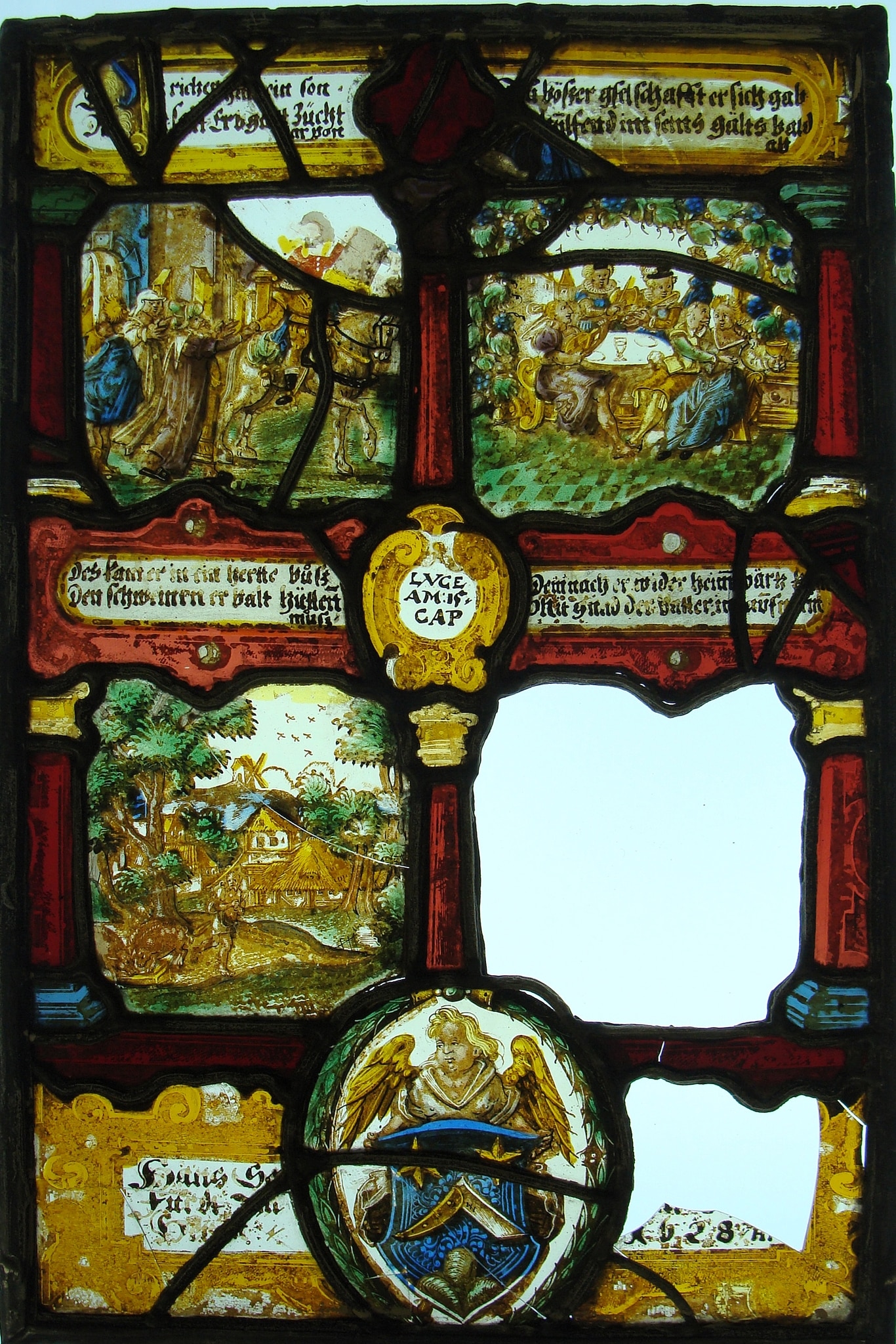The panel is divided into four narrative scenes in two registers by red columns with yellow capitals and blue bases. In the center a cartouche cites the Gospel: Luke 15. Descriptive text panels are above each scene. At the top, on the left, the prodigal son takes leave of his father and on the right, he squanders his inheritance on prostitutes. Below on the left, he tends swine. The lost panel on the right would have shown the prodigal’s return to his father who welcomes him with joy. Below the scenes, in the center of the dedication panel, an olive wreath encloses a coat of arms held by an angel.
73C86 · Parabeln und Spruchweisheiten Christi mit Bezug auf menschliche und göttliche Liebe
73C864 · die Parabeln Christi: der verlorene Sohn (Lukas 15:11-32)
73C8643 · der verlorene Sohn verschwendet (in der Regel in einem Gasthaus oder Bordell) mit Prostituierten sein Erbe
Arms of Scherer: Azure a folding knife proper above a triple mount vert in chief two stars of six points or.
[ . . . ]richer[ . . . ] ein son/ [ . . . ] sein Erbg[ . . . ] Zücht/ [d]ar von. Orginal: Ein alter richer hett ein son / Der gärt sein erbgutt zücht darvon (upper left. An old rich man has a son, his inheritance given (to) him, he goes away.)
Zu böβer gselschafft er sich gab/ hülfend im seins gälts bald/ ab. Original: Zu bößer gselschafft er sich gab / Die hulfend im seins gälts bald ab (upper right. He got himself in bad company. They help him to get rid of his money.)
Des kam er in ein hertte bůβ/ Den schweinen er balt hütten/ muβ. Original: Des kam er in ein hertte bu(o)ß / Den schweinen er balt hütten mu(o)ß (lower left. Thus he came into hard penance. Soon he has to herd the swine.)
Demnach er wider heimwärtz k[a]m / Mit gnad der Vatter in aufn[ . ]m. Original: Demnach er wider heimwärtz kam / Mit gnad der vatter in aufnam (lower right. Afterwards he was homewards bound. And full of mercy his father took him back.)
LVCE/ AM:15 CAP (in center. Luke Chapter 15)
Hans Sc[ . . . ]/ Furt Zu[ . . . ]/ Her[ . . . ] continued on lower right: 1628 H[ . ] (lower left)
Original inscription read from a photograph in the Hearst Archive: Hans Sc – hërer Zum / Furth im – Jar Des / Herrn – 1628. Hans Scherer from Furth, in the year of Our Lord, 1628
HI
HI (on folding knife in shield)
